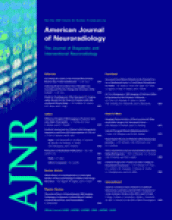Abstract
SUMMARY: Cerebrovascular hemodynamic assessment adds new information to standard anatomic MR imaging and improves patient care. This article reviews the theoretic underpinnings of several potentially quantitative MR imaging–based methods that shed light on the hemodynamic status of the brain, including cerebral blood flow (CBF), cerebral blood volume (CBV), and contrast agent permeability. Techniques addressed include dynamic susceptibility contrast (which most simply and accurately estimates CBV), arterial spin labeling (a powerful method to measure CBF), and contrast-enhanced methods to derive permeability parameters such as the transport constant Ktrans.
- Copyright © American Society of Neuroradiology












